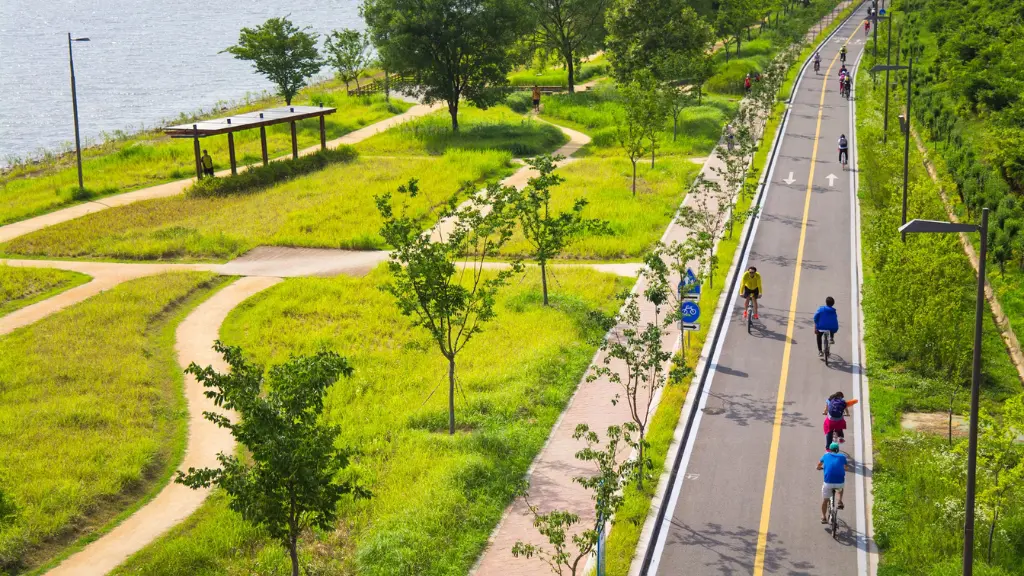Seoul is a sprawling, vibrant city blending traditional charm and modern convenience. Navigating this metropolis might seem overwhelming at first. However, Seoul’s efficient transport system makes it surprisingly easy. Here’s a detailed guide to help you explore the city smoothly.
You May Also Like: How to Get Around San Francisco
1. The Subway System: Fast and Efficient
The subway is the backbone of Seoul’s public transport. It’s clean, punctual, and extensive.
- Coverage: Seoul’s subway system connects almost every corner of the city and extends into surrounding areas.
- English-Friendly: Signs and announcements are in Korean and English, making it tourist-friendly.
- T-Money Card: Buy a rechargeable T-Money card to pay for subway rides. You can purchase it at convenience stores or subway stations.
- Operating Hours: Subways generally run from 5:30 AM to midnight.
Pro Tip: Use apps like Subway Korea for real-time routes and station information.
2. Buses: Affordable and Convenient
Seoul’s buses are a great alternative to the subway. There are different types based on routes:
- Blue Buses: Connect major districts.
- Green Buses: Local routes and subway connections.
- Red Buses: Travel to the outskirts of Seoul.
- Yellow Buses: Circulate within central Seoul.
You can also use your T-Money card for bus rides. Check the electronic boards at stops for bus arrival times.
3. Taxis: Readily Available and Comfortable
Taxis in Seoul are clean, safe, and relatively inexpensive compared to other global cities.
- Types of Taxis:
- Standard Taxis: Affordable, with basic services.
- Deluxe Taxis: More spacious and premium but costlier.
- International Taxis: Designed for tourists, with English-speaking drivers.
- Payment: T-Money cards or cash are accepted.
- Apps: Use apps like Kakao Taxi to book rides conveniently.
Tip: Ensure the driver turns on the meter to avoid overcharging.
4. Bike Sharing: Eco-Friendly Travel
Seoul promotes green transportation with its public bike-sharing system, Seoul Bike (Ddareungi).
- How It Works: Rent bikes via the Ddareungi app. Pick up and drop off at numerous bike stations across the city.
- Cost: Hourly or daily rentals are affordable.
- Bike Paths: Popular routes include the Han River paths and scenic parks.
5. Walking: Explore Hidden Gems
Seoul is a pedestrian-friendly city with vibrant streetscapes. Many neighborhoods are best explored on foot.
- Best Areas for Walking:
- Myeongdong: Bustling shopping district.
- Insadong: Traditional alleys and tea houses.
- Bukchon Hanok Village: Beautiful historic homes.
6. Airport Transfers
Getting to and from Incheon or Gimpo Airports is seamless.
- Airport Railroad Express (AREX): Fast, direct connections to central Seoul.
- Airport Limousine Buses: Comfortable, direct services to major hotels and districts.
- Taxis: Convenient but pricier than public transport.
7. Ride-Sharing and Car Rentals
- Ride-Sharing: Apps like Kakao Mobility are popular for private car hires.
- Car Rentals: Renting a car is not recommended unless traveling outside Seoul, as traffic and parking can be challenging.
8. Apps to Simplify Travel
- Naver Map: Accurate navigation in Korea.
- KakaoMap: Great for finding places and public transit routes.
- Kakao T: For booking taxis.
9. Tips for First-Time Visitors
- Learn Basic Korean Words: Words like “hello” (annyeonghaseyo) and “thank you” (kamsahamnida) go a long way.
- Avoid Rush Hours: Subways and buses can be crowded between 7-9 AM and 6-8 PM.
- Carry Small Change: Helpful for buses and older taxi meters.
Seoul’s transport system is designed to cater to locals and visitors alike. Whether you prefer the subway, taxis, or bicycles, navigating the city is straightforward and enjoyable. Dive into the experience, and let Seoul’s vibrant energy guide your journey!










